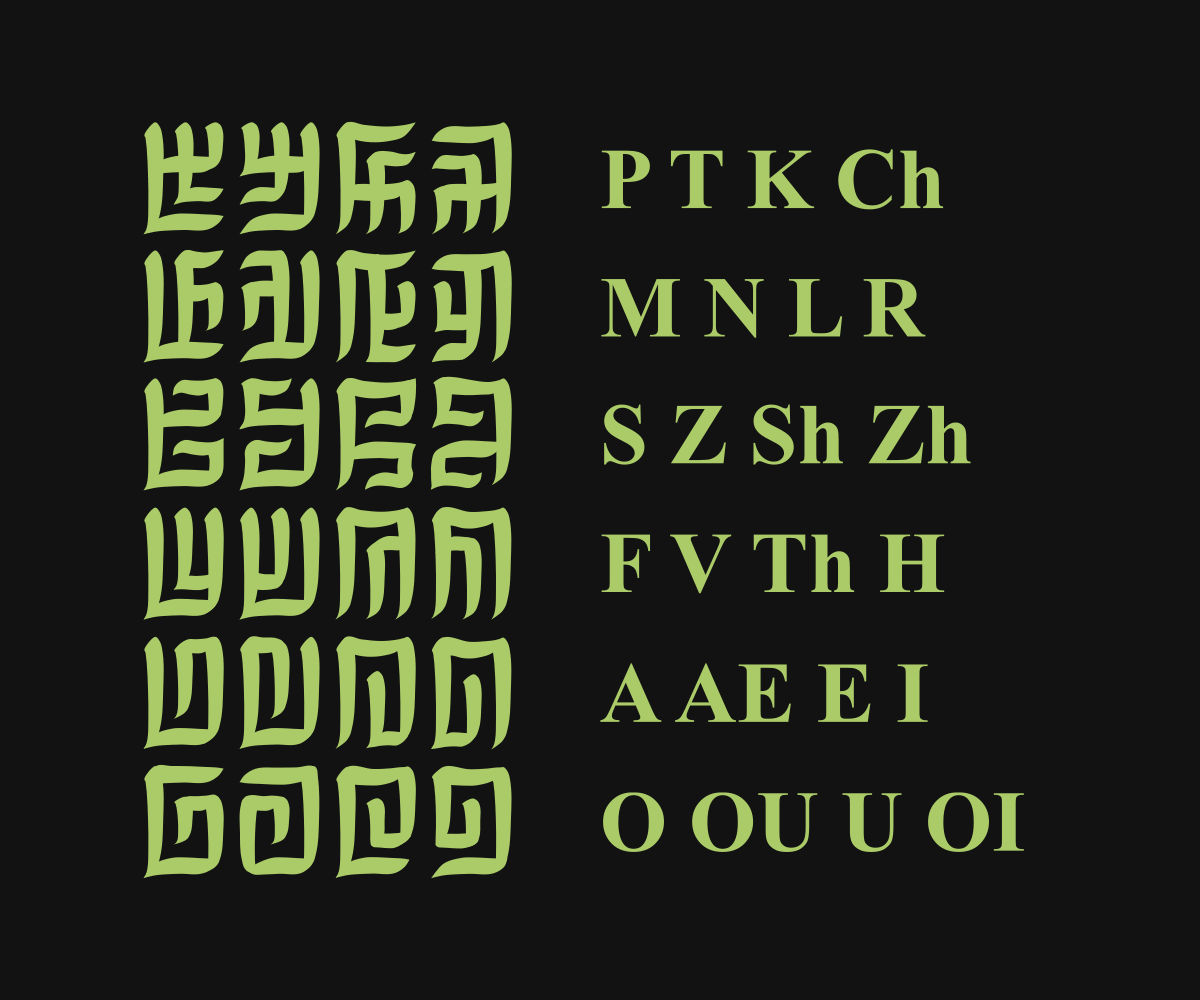Conlang
My personal conlang incorporates an agglutinative grammatical structure, a simple phonology and highly symbolic vocabulary. It is inspired by the languages of classical antiquity and is meant to be the language of an exotic land I have yet to fully reveal in my own creative work. All elements within this page are subject change as I refine my language and develop my conlanging skills.
Charna

Phonology Plosives: p, t and k Affricatives: ch Nasals: m and n Hard Fricatives: s, z, sh and zh Soft Fricatives: f, v, th and h Liquids: r and l Front Vowels: a, ae, e and i Back Vowels: o, ou, u and oi Phonotactics Syllable construction: (C)V(C) Onset: Only ch, chr, f, fl, fr, k, kl, l, m, n, p, pl, pr, r, s, sh, shr, sk, sl, sm, sn, sp, sr, st, t, tr, th, thr, v, vr, z, zh and zhr are allowed. Nucleus: Only front and back vowels are allowed. Coda: Only front vowels, back vowels, k, l, m, n, p and r are allowed. Transliteration A AE Ch E F H I K L M N O OI OU P R S Sh T Th U V Z Zh Syntax Word order: SVO Example Tae zhinut lukut zhrakan pinim zar With great successful passion heros speak Suffixes adjective: te, et, tu or ut adverb: pa, ap, po or op agent (plural): mi, im, moi or oim agent (singular): me, em, mu or um future tense: lae, ael, lou or oul gerund (plural): ki, ik, koi or oik gerund (singular): ke, ek, ku or uk natural place (plural): zhae, aezh, zhou or ouzh natural place (singular): zha, azh, zho or ozh noun (plural): na, an, no or on noun (singular): nae, aen, nou or oun past tense: la, al, lo or ol settlement (plural): thae, aeth, thou or outh settlement (singular): tha, ath, tho or oth Suffix Format Using singular nouns as an example: With a front vowel in the root: -an after p, t, m, n, s, z, f, v -na after a, ae, e, i, k, ch, l, r, sh, zh, th and h With a back vowel in the root: -on after p, t, m, n, s, z, f, v -no after o, ou, u, oi, k, ch, l, r, sh, zh, th and h